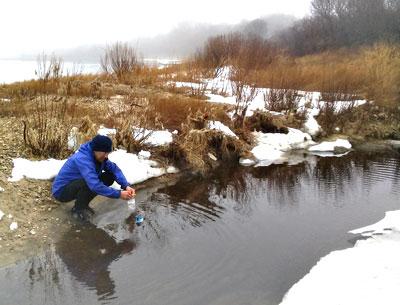Results are in for Montauk Water Tests

The most recent test results from several bodies of water in Montauk were released this week. The samples, part of the nationwide Blue Water Task Force, a federally mandated program for all bathing beaches that is conducted monthly, weekly, and sometimes daily after a heavy rainfall, show that the site with the highest levels of the bacteria enterococcus was an area called West Creek, which is just west of the beach known as South Lake on Lake Montauk.
The Concerned Citizens of Montauk and the Surfrider Foundation released the results. Jeremy Samuelson, the executive director of C.C.O.M., said that all states with public bathing beaches are required to conduct such tests. On eastern Long Island, Suffolk County is charged with the testing.
Trained volunteers from the citizens group and Surfrider collect samples that must sit for 24 hours before the results can be read. The data are then posted to the Surfrider website and linked to C.C.O.M.’s.
In the testing, which took place during the week of Dec. 11 to Dec. 15, lower levels of the bacteria were found in water on the east side of South Lake, the causeway near Star Island, Coon’s Foot Cove, and Fort Pond near Industrial Road. Little Reed Pond off East Lake Drive produced a medium level of the bacteria.
For the last few years civic groups have been urging East Hampton Town officials to warn those who use the beach at South Lake of its bacteria pollution. The shallow beach with calm water makes it ideal for families with young children. But it was not until this past summer that a sign was finally posted there and the lifeguard pulled from the site, although that did not seem to be a deterrent — on summer days the parking lot and beach were full.
The type of bacteria that is tested becomes more prevalent in warmer weather. The testing does ot distinguish what is causing the enterococcus, which can be can be found in all types of waste from warm-blooded animals, including birds. Though the bacteria levels rise and fall with rain, South Lake has repeatedly produced levels that can be unsafe for bathers.
“It’s not a huge crisis, but we need to do a better job in getting the information out to people,” Mr. Samuelson said. The results are available at surfrider.org/ blue-water-task-force/chapter 37.
